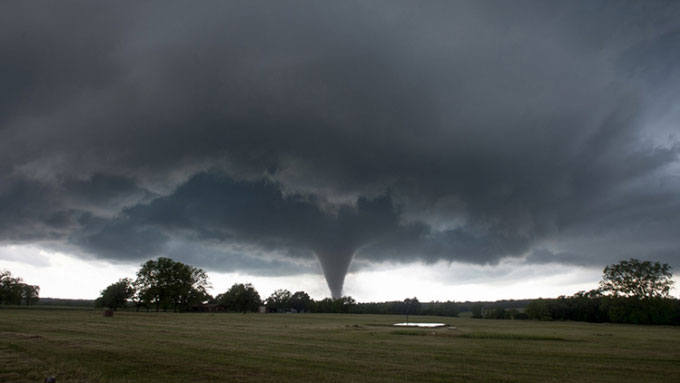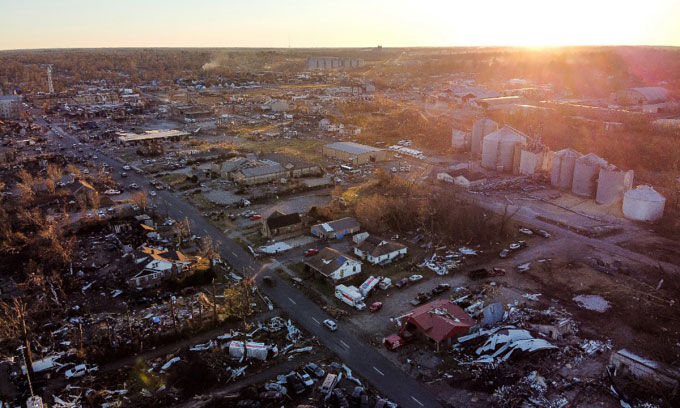Global warming may facilitate tornadoes, but scientists remain cautious about the direct link.
Many previous studies have indicated a strong connection between climate change and extreme weather events, from record heat this summer in North America to flooding in Western Europe. However, significant gaps remain in our scientific understanding of tornadoes and how they relate to global warming.

Tornado sweeping through southern Wynnewood, Oklahoma, USA. (Photo: AFP)
“At least over the past few decades, we have seen a trend towards more favorable conditions (for tornadoes), particularly in winter in the Midwest and Southeast United States. However, it may be misleading to attribute this event solely to climate change,” emphasized expert John Allen from Central Michigan University.
Climate scientist James Elsner at Florida State University compared this statement to the relationship between fog and car accidents: foggy conditions on the road may correlate with a higher number of accidents, but accidents caused by individuals in dense fog are not necessarily due to poor visibility.
Similarly, the direct link between climate change and tornadoes is a topic that requires further research.
The idea is to provide climate data into computer models to analyze the probability of specific extreme weather events occurring in a “no climate change” world compared to the world we live in today. However, such studies take time to conduct and are particularly complex regarding tornadoes, which are harder to model than other extreme weather phenomena due to relatively sparse data.
It is still too early to definitively state that climate change will increase the frequency of winter tornadoes.

Debris in Mayfield, Kentucky, USA, on December 13. (Photo: AFP).
In fact, the average number of tornadoes per year in the United States has not increased in recent years, hovering around 1,300, with most occurring in the spring.
“Most months show a decline in the number of tornadoes and the number of days with tornadoes over the past 30 or even 40 years, with the exception of December and January, which have seen an increase in tornado activity during the same period – a result that is ‘quite consistent’ with the potential climate explanation,” added atmospheric scientist Jeff Trapp from the University of Illinois.
Tornadoes form from thunderstorms when warm, moist air meets cooler air accompanied by rain or hail. This creates swirling air currents that begin horizontally and can develop vertically.
“In recent years, a noticeable trend is the higher likelihood of warm days during the cooler season. This condition can support thunderstorms and tornadoes,” Trapp stated.
Furthermore, when tornadoes form, outbreaks tend to become more intense, although the total number of storms in a year remains the same, according to researcher Chiara Lepore from Columbia University.
Finally, scientists have noted a shift eastward in the United States in a phenomenon known as “tornado alley”, with more storms likely to impact Arkansas, Mississippi, or Tennessee – all three areas recently affected by a “tornado disaster” just days ago.
What comes next? The challenge scientists face when studying tornadoes is that they are transient, small in scale, and difficult to track in climate models, unlike larger events such as hurricanes or heat waves. Therefore, they can only study changes in conditions that “may be conducive” to their formation.
A recent study found that for every 1°C increase, the likelihood of severe thunderstorms occurring in the U.S. increases by 14-25%. Lepore, the lead author of the study, stated that it remains very difficult to infer that this will lead to more tornadoes.
According to another upcoming report co-authored by Trapp, researchers predict that tornadoes may become stronger in the future, but violent tornadoes or super tornadoes will still be “rare events” rather than “the new normal.”
“We are in the early stages of understanding the relationship between climate change and what we call severe local storms, including tornadoes and hail. In the next 5 to 10 years, I think there will be some real progress,” Elsner noted.


















































